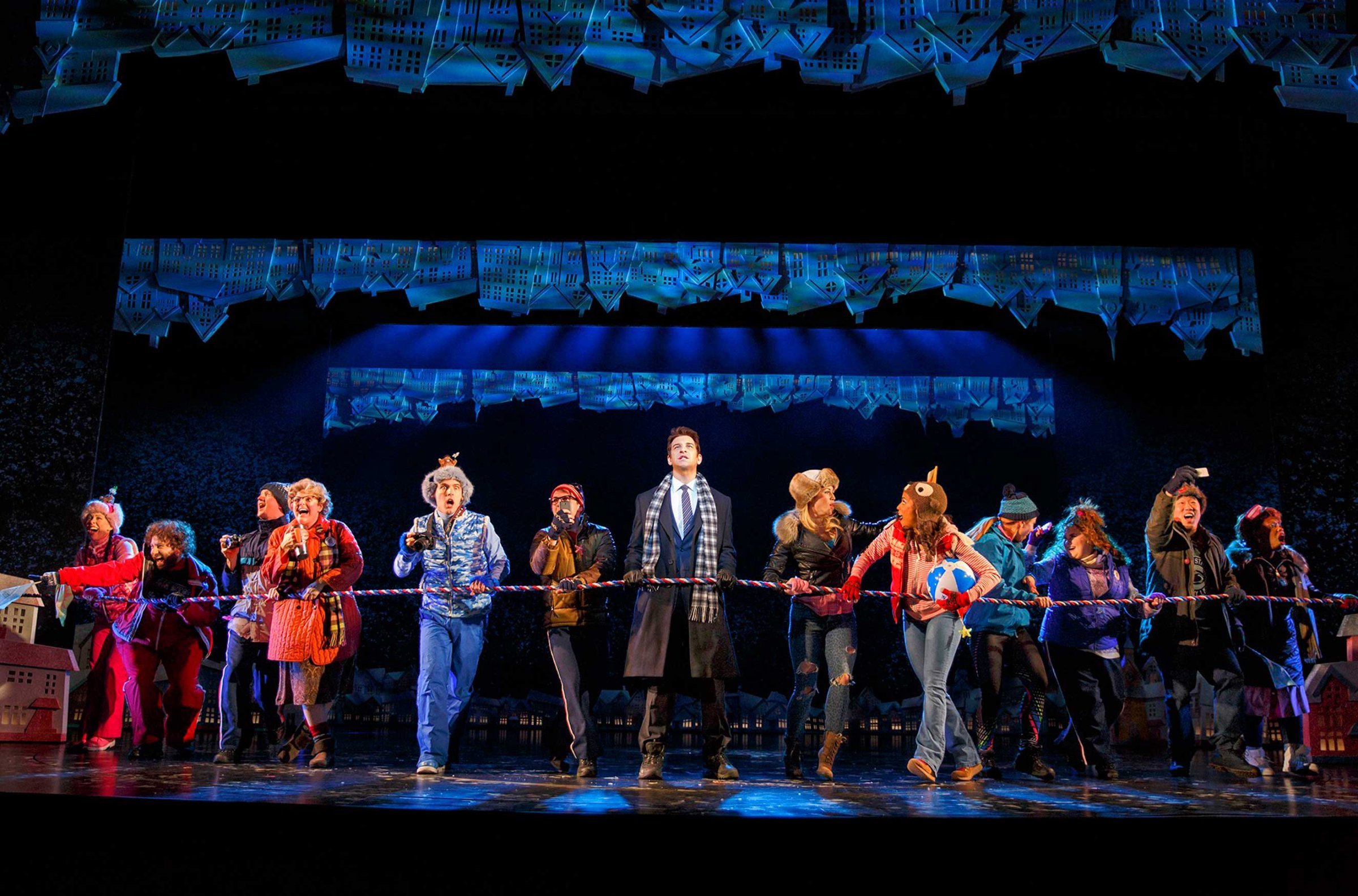
At the end of the 1993 romantic comedy Groundhog Day, after a seeming eternity of waking up over and over again on the same day, weatherman Phil Connors finally, truly, spiritually awakens. Twenty-four years later, Phil is again trapped inside of Feb. 2. Only this time, he bears no resemblance to the actor who originated the movie role–a delightfully caustic Bill Murray. And his purgatory plays out in front of a live audience on Broadway.
The musical Groundhog Day, which opened on April 17 to rave reviews, is the latest entry in the increasingly popular movie-to-musical pipeline. (See related chart on page 52.) Just as Hollywood is rebooting old hits and elevating forgotten comic-book heroes, the theater industry has turned to existing intellectual property–and movies in particular–for inspiration.
As a film, directed by Harold Ramis, Groundhog Day achieved cult status. But there are a number of reasons the musical Groundhog could have faltered on its way to the stage. Revisiting a beloved contemporary classic posed the risk of alienating fans if it strayed too far and failing to connect with nonfans if it hewed too close. The repetitive premise risked tedium without the flexibility of film. And that is to say nothing of the absence of Murray, whom Roger Ebert called “indispensable.” “The more the audience loves the film, the harder your job is,” says Matthew Warchus, who directed the production.
But after transferring from London, where it won Olivier Awards for Best New Musical and Andy Karl’s updated take on Phil, the show is poised to become Broadway’s next hit. (It just grabbed seven Tony Award nominations.) That’s because its creators–Warchus, composer and lyricist Tim Minchin and writer Danny Rubin, who co-wrote the film–have amplified, and not just re-created, its tale of a cynic’s metamorphosis.
Having dreamed up the musical no sooner than he’d sold the script to Hollywood, Rubin had been marinating on ideas for decades while teaching screenwriting. So he was encouraged when Warchus said not to see the stage as a limitation: “Anything you can dream up, we can do onstage.”
“We thought it lent itself really well to theater,” says Warchus. “Film is more of a literal medium compared to theater, which is more poetic.” To adapt a montage in which a despondent Phil devises myriad ways to end his life, he has stunt doubles create the illusion of jump cuts between the toaster in the bathtub and the plunge from great heights–with Phil waking up in his bed after each try.
But where the musical dispenses with some of the movie’s minutiae, it offers something new: Minchin’s songs, which mine the inner lives of characters like Phil’s producer-slash-love-interest Rita Hanson (Barrett Doss); a former high school punching bag; and a one-night stand with dreams beyond bedding visiting meteorologists.
“The film smuggled a story with deep meaning into the mainstream as a romantic-comedy popcorn film, without compromising much on its depth,” says Warchus. Which may explain why Groundhog Day has legs while other adaptations falter.
“It taps into something universal, to look at the world through other people’s eyes,” says Karl. “When you get there, it’s a beautiful thing. You get to see the world much clearer.”
More Must-Reads from TIME
- Why Biden Dropped Out
- Ukraine’s Plan to Survive Trump
- The Rise of a New Kind of Parenting Guru
- The Chaos and Commotion of the RNC in Photos
- Why We All Have a Stake in Twisters’ Success
- 8 Eating Habits That Actually Improve Your Sleep
- Welcome to the Noah Lyles Olympics
- Get Our Paris Olympics Newsletter in Your Inbox
Write to Eliza Berman at eliza.berman@time.com